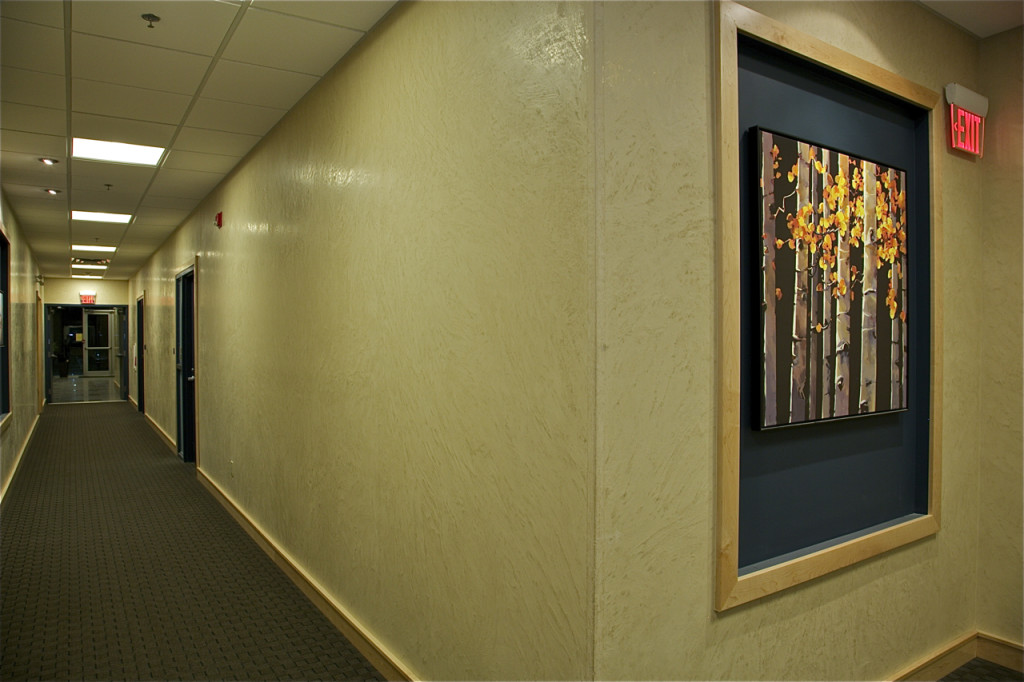
04 Jul How to transform any commercial space with venetian plaster
If your commercial showroom is looking drab, venetian plaster could be just the ticket to sprucing it up. With its highly polished appearance and natural limestone look, it adds pizzazz to any space and makes a classy first impression.
If you are looking for a material that will make your commercial space stand out, you can’t beat the wow factor of venetian plaster. It can be used on all your walls, or just in areas where customers will see. Most opt for the latter option, because stock rooms and changing facilities are hardly the place for such a premium material.
Venetian plaster in commercial spaces
Venetian plaster has proven most popular in high-end retail stores. World-renowned department stores and retail outlets in Milan, New York, London and Paris have venetian plaster walls. They chose venetian plaster because it dries as solid limestone, and thus gives the appearance of solid limestone walls which would cost hundreds of thousands of pounds.
Another popular commercial space for venetian plaster is restaurants. Restaurants appreciate the classy appearance of venetian plaster and how it changes in character as you switch between a natural and artificial light source. It allows restaurants to create an airy and relaxing space during the day, and a romantic space at night.
Shopping centres have also started to utilise venetian plaster, and especially in areas with high-end stores. The most popular shopping centres in London use some form of polished plaster on walkways and in-between stores to deliver a premium shopping experience. One of the best examples is Westfield London, near Shepherd’s Bush.
Using venetian plaster most appropriately
Venetian plaster is a classic stucco. In its purest form, it’s made from just fired limestone and water. The appearance is soft and natural, and the final colour can be a variation of grey, white, beige or brown. The quantity and type of fired limestone used dictates the final colour, so it is possible to request a darker or lighter plaster.
Venetian plaster is most suitable for walls and ceilings. For floors, polished concrete is a more suitable material. Venetian plaster is also suitable for columns and archways, as well as wet areas because it is highly breathable. This makes it suitable for application in private and public bathrooms – high-end hotels are prime candidates.
We recommend venetian plaster for customer-facing applications. For example, walk in showrooms. The beauty and luxury of venetian plaster would be wasted in a box room or a kitchen. In these rooms which are for staff, regular plaster can be used. The aim is always to create a luxury ambience with venetian plaster. For this it must be seen.
Venetian plaster in office and executive spaces
Venetian plaster is growing in popularity in office spaces, and especially in high-profile offices of world-renowned firms. Legal firms, accounting firms, stockbrokerage firms and a wide range of other businesses are choosing venetian plaster for their walls. The reason? It exudes a sense of class and creates a great first impression.
It isn’t used universally in office buildings, though. Venetian plaster is typically reserved for boardrooms and meeting areas rather than the staff canteen. The most popular place for venetian plaster in offices however is the reception area. This area is accessed by clients and employees all the time, so it’s got to look as good as possible.
Another reason venetian plaster is growing in popularity in offices is the colour can be changed with aggregates such as glass or granite powder. The putty can be tinted a wide range of colours, many of which complement corporate branding. For companies who want to theme their building, venetian plaster is a high-class option.
Changing the plaster’s appearance to suit your needs
Venetian plaster is traditionally a smooth plaster that’s grey, white or brown. It’s typically polished to a high gloss. Hence, the term ‘polished plaster’. But if that isn’t your thing, it can be ‘roughed up’ or texturized to create a dramatic effect. This can involve using a rough grit sandpaper during the polishing stage or manipulating the plaster with tools before it dries.
The most common way to change the appearance of plaster is to change the limestone content and change the polishing grade. If you change the quantity or type of limestone in the putty, you change its colour or tint. And if you change the type of polishing pad used you can create walls that are matte, satin or glossy. The choice is yours.




No Comments